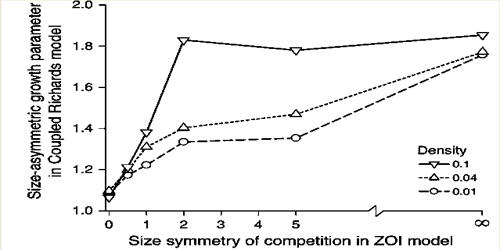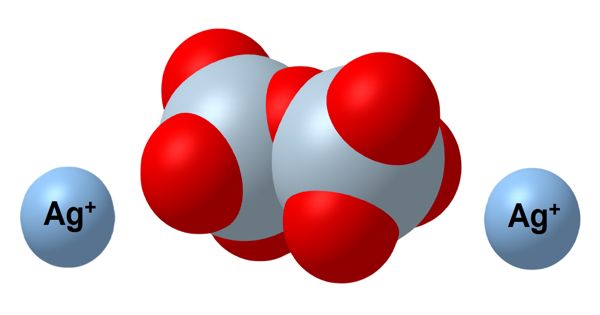Asymmetric competition is an unequal division of resources amongst competing plants. Size-asymmetric competition refers to situations in which larger individuals exploit disproportionately greater amounts of resources when competing with smaller individuals. The concept of size asymmetry in resource competition among plants, in which larger individuals obtain a disproportionate share of contested resources, appears to be very straightforward, but the effects of size asymmetry on growth and size variation among individuals have proved to be controversial. Thus, competition may be asymmetric in the sense that some individuals remove a disproportionately large amount of resources.
Size-asymmetric competition among plants is usually defined as resource pre-emption by larger individuals, but it is usually observed and measured as a disproportionate size advantage in the growth of larger individuals in crowded populations. There is much evidence that plant competition below ground is size symmetric, i.e. that competing plants share contested resources in proportion to their sizes. This type of competition is common among plants but also exists among animals. Size-asymmetric growth can be strong evidence that competitive mechanisms are at least partially size asymmetric, but the degree of size-asymmetric growth is influenced by the intensity as well as the mode of competition.
Size-asymmetric competition usually results from large individuals monopolizing the resource by “pre-emption”. i.e. exploiting the resource before smaller individuals are able to obtain it. It is reflected in the rules for dividing up the overlapping areas. Size-asymmetric competition has major effects on population structure and diversity within ecological communities. Competing plants were half the size of non-competing plants, meaning that root competition was very strong. Root competition was size-asymmetric to some degree in all soil treatments. When competition is asymmetric at the species level, yield–density responses follow an exponential decline. Otherwise, arithmetic mean performance follows a classic hyperbolic response. We grew simulated populations with different degrees of size-asymmetric competition and at different densities and analyzed the size dependency of individual growth by fitting coupled growth functions to individuals. Root competition can be size asymmetric, but not to the same degree as competition for light.
















